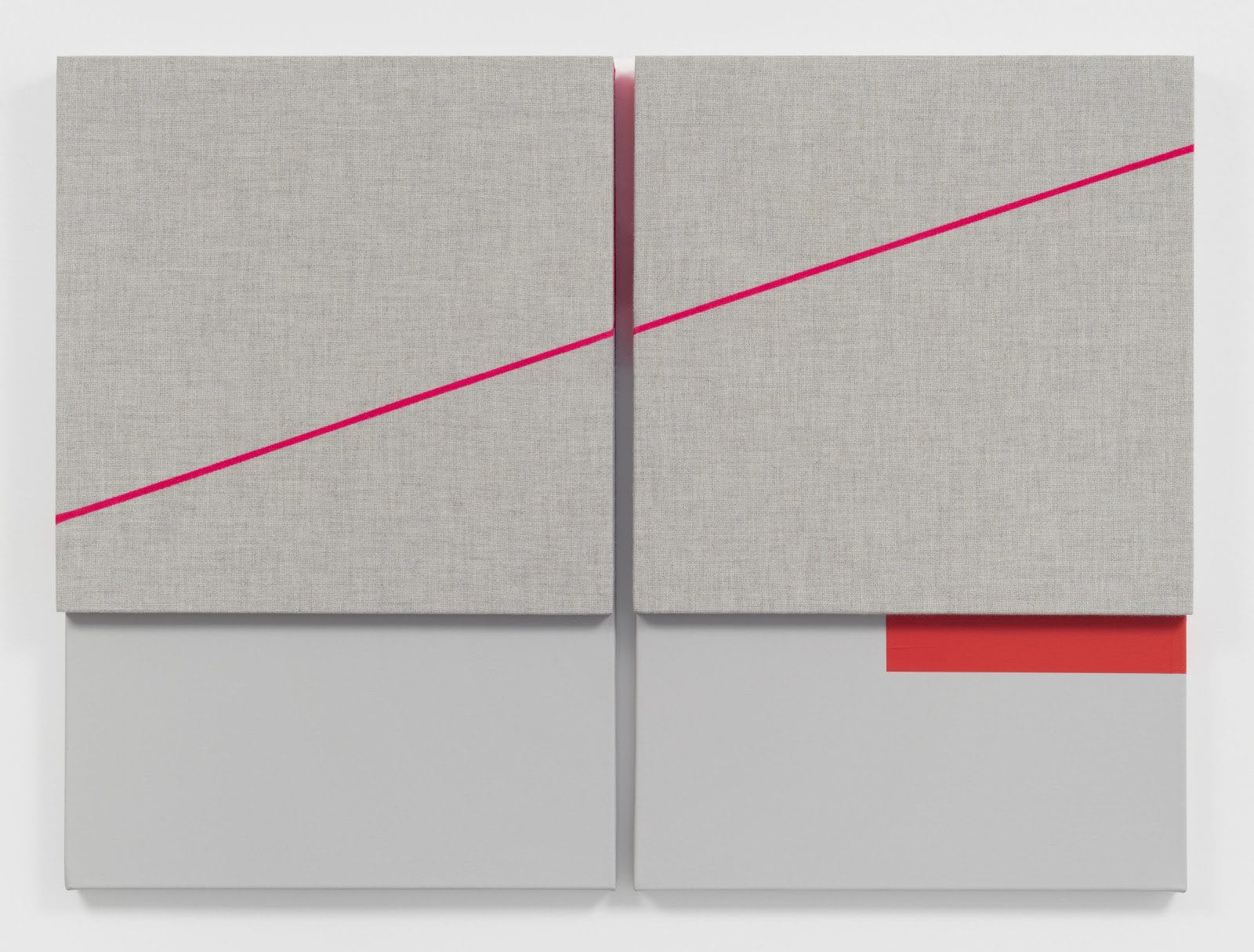Alexander Gray Associates, Germantown presents Jennie C. Jones’ first exhibition with the Gallery, Passing Tones and Broken Chords. The show features new 2020 Acoustic Panel Paintings that further expand on the artist’s research into the sonic, honing her use of materials and approach to color and form. Passing Tones and Broken Chords inaugurates the Gallery’s new exhibition space, located at 224 Main Street in Germantown, NY.
Seamlessly integrating the visual with the aural, Jones’ paintings’ titles underscore their connection to sound. Drawing on musical terminology, works like Tempo Grave (Marking Dark Time) (2020) and Tempo Largo (Marking Dark Time) (2020) reference slow, dirge-like speeds of music. Reinforcing this solemnity, the canvases’ black panels also allude to mourning. Signaling Jones’ return to black monochromes, these two paintings are the first the artist has created since 2014.
In a departure from earlier black pieces, Tempo Grave (Marking Dark Time) and Tempo Largo (Marking Dark Time) incorporate painted acoustic panels into their compositions. Jones describes how the process of allowing paint to evenly soak into the fabric panels to create subtle tonal variations “…became an existential back and forth struggle … towards an impossible flawlessness.” Expanding on the considered nature of her works’ surfaces, she writes, “Underpainting is becoming more and more critical to my process. The layering with the ‘memory’ or passing time of previous brush work is apparent in the soft impasto and ghostly brush strokes embedded in the monochromatic surfaces.”
Like Jones’ Tempo works, the layered surface of Bright (Red) Gracenote (2020) also suggests the passage of time. The painting’s richly pigmented planes juxtapose painted felt against canvas, and recall Jones’ assertion that her surfaces “… are not flat if you move with enough deliberation, step to and from them as if within them.” Highlighting the labor required to create such effects, the artist ultimately challenges the connection between the reductive and Minimalism, characterizing her own Minimalist process as defined by “maximalist” techniques to erase her hand. As she argues, “The idea of lack can be turned on its head in order to be perceived as pure potential and opportunity. Perhaps this relates directly to African American improvisation and creative utility, to working inventively with spare means.”
Further capitalizing on the “pure potential” of her materials and evocatively spare visual language, in works like Fractured Crescendo, Red Rest (2020) Jones experiments with new applications of color. Foregrounding what she characterizes as a “hot” red acrylic, the canvas boasts a diagonal line of bright red paint across two acoustic panels. In contrast to this slashing introduction of color, Deep Structure (Oxide Rest) (2020) features uneven bands of darker red pigment that accent the channel between two panels. The artist explains, “The subtle lines inside the picture plane rather than at the edges are a way of almost painting the shadows of form, which is again a shift toward amplifying objecthood.”
Emphasizing objecthood, Jones’ painterly approach ultimately interrogates the legacy of Minimalism. “There are social and political ramifications to rejecting ‘subject’ and embracing ‘object’—as an African American woman, much more is at stake,” she concludes. “Minimalism becomes a radical gesture empowering a refusal to sell my narrative or bodies.”
Jennie C. Jones’ one-person exhibitions include Jennie C. Jones: Constant Structure, The Arts Club of Chicago, IL (2020); Compilation, Contemporary Arts Museum Houston, TX (2016); Absorb/Diffuse, The Kitchen, New York, NY (2013); Directions: Jennie C. Jones: Higher Resonance, Hirshhorn Museum and Sculpture Garden, Smithsonian Institution, Washington, D.C. (2013); Counterpoint, Yerba Buena Center for the Arts, San Francisco, CA (2011); and RED, BIRD, BLUE, Atlanta Contemporary Art Center, GA (2009). Her work has been included in countless group exhibitions, including the upcoming Prospect.5: Yesterday we said tomorrow, New Orleans, LA (2021); Ground/work, Sterling and Francine Clark Art Institute, Williamstown, MA (2020); Riffs and Relations: African American Artists and the European Modernist Tradition, The Phillips Collection, Washington, D.C. (2020); The Shape of Shape, The Museum of Modern Art, New York, NY (2019); and Magnetic Fields: Expanding American Abstraction, 1960s to Today, Kemper Museum of Contemporary Art, Kansas City, MO, traveled to National Museum of Women in the Arts, Washington, D.C. (2017). Jones’ work is in the collections of the Guggenheim Museum, New York, NY; Hirshhorn Museum and Sculpture Garden, Smithsonian Institution, Washington, D.C.; Los Angeles County Museum of Art, CA; The Museum of Modern Art, New York, NY; The Studio Museum in Harlem, New York, NY; and Virginia Museum of Fine Arts, Richmond, VA, among others. She is the recipient of numerous awards, including the Rose Art Museum, Ruth Ann and Nathan Perlmutter Artist-in-Residence Award (2017); Robert Rauschenberg Award (2016); Joan Mitchell Foundation Grant (2013); The Studio Museum in Harlem, Joyce Alexander Wein Artist Prize (2012); and William H. Johnson Prize (2008). Jones is on the board of both the Skowhegan School of Painting & Sculpture and the Foundation for Contemporary Arts. She is a Visiting Critic at Yale University, New Haven, CT and a faculty member in Painting at the Milton Avery Graduate School of the Arts, Bard College, Annandale-On-Hudson, NY.
